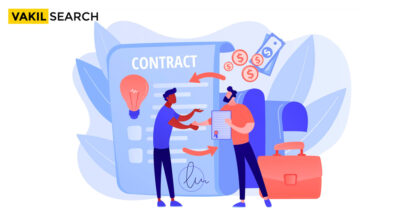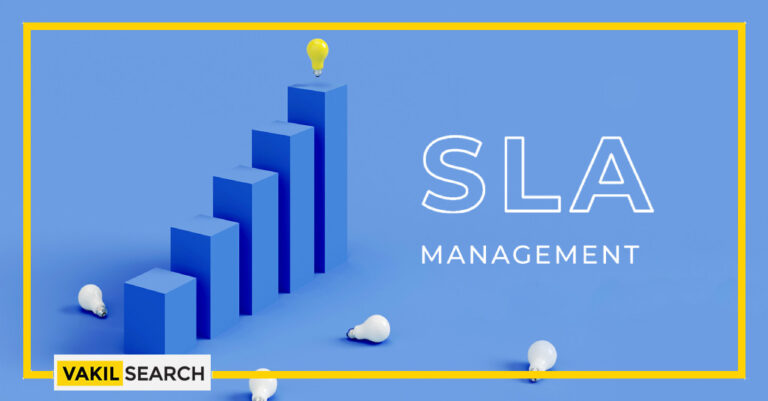This blog will provide information about Service Level Agreements (SLAs) and their types. It will also provide a usable template for drawing up an SLA.
A Service Level Agreement (SLA) refers to a contract drawn between a customer and a service provider. It specifies the services that the service provider shall give to the customer, and it also sets the standard of the service that the service provider must meet.
The SLA is a bidirectional agreement that involves two parties.
In the present times, SLAs play a pivotal role since the providers of services need them to manage the expectations of their customers and to define the level of severity and the circumstances where they cannot be burdened with being held liable for issues related to performance or for outages. On the other hand, for customers, an SLA elaborates the service’s performance characteristics, enabling comparison with other vendors. For customers, SLAs also define the redressal mechanism for service-related issues.
Generally, of the two agreements, an SLA is one foundational agreement service providers enter into with customers. Several service providers sign a master service agreement which sets the general terms and conditions of working between the service provider and the customers.
Often, the SLA will be linked through reference in the master service agreement service provider. An SLA is more specific in terms of the services being provided and the metrics for performance measurement. The services that are offered are described in the service commitments.
Types of Service Level Agreements
The three basic types of SLA are:
- Customer
- Internal
- Multi-level.
Customer SLA
The customer SLA is drawn up between a provider of services and its external customers. This type of agreement is also referred to as an external service agreement.
In an SLA that is customer-based, the service provider and the customer enter into an agreement regarding the customer’s services.
In a customer SLA, the following are to be included:
- Specific details of the services that the customer expects
- Provisions for making the service available
- Service level standards
- Responsibility of the parties of the SLA
- Procedures for issue escalation
- SLA cancellation terms.
Internal SLA
An internal SLA is one that is drawn between a company and an internal customer of the company, such as a department, a site, etc. It could be between two departments of a company.
So, the fact of the matter is that a company can sign service level agreements with external customers as well as with its two internal teams, for example, between the sales and the marketing teams.
Multi-Level SLA
In a multi-level SLA, the agreement is divided into several levels specific to the various customers to whom the service is being provided.
SLA Template
There are several parts to an SLA, and specific types of information need to form part of the SLA. Here are the various components under which information needs to be provided in an SLA.
-
Overview of the Agreement
Here, provide the agreement’s basics, who are the parties to the agreement, the date from which the agreement will be implemented, and a description of the service which is to be provided.
-
Services’ Description
This section needs to provide in complete detail the description of the service for which the agreement is being made, all circumstances under which the service level will be available and at what level, what will be the turnaround, and other similar details. The definitions of the service must also specify how the service will be delivered, will the maintenance service be provided, what will be the hours of operation, where the dependencies lie, what will the process be, and what are the applications and technologies that are being employed.
-
Exclusions
Services that will not be offered need to be included in the Exclusions section. They should be clearly specified to prevent any sort of confusion to could lead to false assumptions.
-
Performance of the Service
What the levels of the service will be and what metrics will be used to measure the performance need to be clearly laid out in this section. There has to be a mutual agreement between the user and the service provider regarding the various metrics which will be employed for measuring the service provider’s service levels.
-
Redressal
Means for resolving issues by the service provider and/or associated compensation for the user must be defined in this section for when the service provider is unable to meet the various promises listed in the SLA.
-
Stakeholders
In this section, the parties who are part of the agreement need to be clearly specified. The responsibility that each party holds also should be clearly specified in detail.
-
Measures of Security
In this section, the security measures that the service provider will take need to be laid out.
-
Risk Management and Disaster Recovery
This section gives in detail the process to be used for risk management and the plan that has been formulated for disaster recovery.
-
Tracking and Reporting of the Service
Here, the reporting structure must be defined, along with the frequency of tracking and who the stakeholders are who are involved in the SLA.
-
Processes for Periodic Review and Change
This section provides the periodicity and processes of reviewing the key performance indicators. Also, the processes that will be applied for implementing change are clearly defined.
-
Process for SLA Termination
Here, the various circumstances under which the SLA will expire or can be terminated are defined. This section must also carry the notice period from both parties.
-
Signatures of the Parties to the Agreement
Every stakeholder and participant associated with the two parties needs to affix their signatures to the document implying that they agree with all contents of the agreement.
SLA Advantages
- Legally Binding: The service provider is bound legally to keep up a specific service level as guaranteed in the SLA which has been agreed upon by the user. Then, if there is a problem with the service, the service provider can be sued
- Better Responsiveness and Reliability: A service provider who signs an agreement builds better trust with the user and seems more reliable to the user. The user is more concerned about how the service will affect the user rather than with how it is provided. Therefore, fast response and punctuality so far as the needs of the customer are concerned and be taken care of via a service level agreement
- No Scope for Confusion: specifications regarding the service that will be provided, how it will be provided, what the level of the service will be, and other such details are clearly defined in the service agreement. There is no room for confusion when there is complete detailed information
- Poses as Evidence: The SLA itself is evidence enough to display the agreed-upon and guaranteed service levels.
Conclusion
A Service Level Agreement comes with various advantages. It clearly defines the expectations of both signing parties, redressal mechanism, tracking mechanisms and metrics, conditions of the breach, and conditions of cancellation of the agreement. This article summarises the same for you to be better equipped with the knowledge of SLAs before drafting one.
Note: Can you please guide us as to whether you have a template that we can insert?
Read More,










